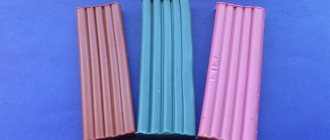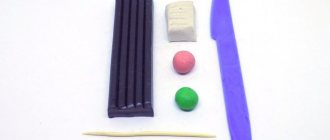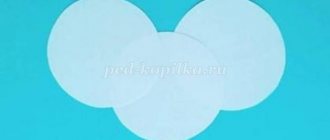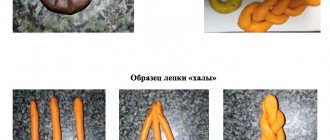Summary of the lesson on modeling “Duck” (based on the Dymkovo toy)
Heresek then byndagy yimdastyrylgan oku kyzmetіnіn abstracts
Summary of organized educational activities in the senior group
Event notice/Date:
04.11.19
Tarbieshi/Teacher:
Bilim take salas/Educational area:
creation
Pәn/Item:
modeling
Overall/Cross-cutting theme:
“The people are the source of art”
Takyryby/Topic:
“Duck” (based on the Dymkovo toy)
Maksattaras/Goals:
1Tarbielik - educational:
Cultivating interest in the toys of other peoples.
2. Damytushylyk - developing:
Development of aesthetic feelings.
3.Okytu - educational:
introducing children to Dymkovo toys (ducks, birds, goats, etc.), paying attention to the beauty of the continuous streamlined shape, specific coloring, painting. Learning the ability to convey the relative size of parts of a duck, the technique of smearing, smoothing, and flattening.
Pedagogical technology / pedagogical technology:
health-saving, person-oriented
Resurstarmen kamtamasyz etu/Resource support:
Dymkovo toys. Clay, modeling board (for each child).
Bilingual component / Bilingual component:
Uyrek - duck
Uyimdastyrylgan oku kyzmetinin Barysy
1.yimdastyrushylyk kezeni/organizational moment
The teacher invites the children to go to an exhibition of clay toys.
2. Negіzi bolіmі/main part
When exhibiting Dymkovo products in front of children, note their unusualness, the beauty of a white toy with a bright, elegant pattern.
Story:
In the village there live craftswomen who make beautiful and elegant toys. They are sculpted by craftswomen from clay, dried, and then fired in a kiln. After firing, they are covered with white paint and decorated with a bright pattern. These toys are called Dymkovo because they are made in the village of Dymkovo.
Ask what the pattern is made of. Invite the children to sculpt a duck.
Bilingual component / Bilingual component:
Uyrek - duck
Examine the toy, ask what techniques they will use when doing the work.
Finger gymnastics “Duck”
| The duck walked along the shore, The gray one walked along a steep path. She led the children with her, | (“They walk” with two fingers on the table, waddling.) |
| Both small and large, | (Bend the ring finger; thumb.) |
| Both medium and smaller | (Bend the middle finger; little finger.) |
| And my favorite one. | (Bend the index finger.) |
Independent work of children. The teacher observes and helps if necessary.
3. Korytyndy/final part
Consider all the images sculpted by the children and choose the most expressive ones.
Dymkovo patterns
The geometric pattern consists of stripes of different thicknesses, wavy lines, rings, circles, peas, and ovals. Characteristic of painting is a combination of large and small elements. Small elements are decorated with large rings, circles, stripes; or scattered between them (dots, dashes, thin lines).
SUMMARY OF MODELING NODES TOPIC: “Duck with ducklings.”
SUMMARY OF STYLE NODES
TOPIC: "Duck with ducklings."
Target:
teach children to sculpt an object consisting of several parts, showing some characteristic features (elongated beak, tail).
Tasks:
Educational:
- Strengthen modeling techniques: rolling the dough between your palms;
- Practice using the technique of pinching and pulling;
Educational:
- Strengthen the ability to connect parts, pressing them tightly to each other, and smoothing the seams.
Educators:
- Foster a positive emotional response to the overall result.
Preliminary work:
Conversation with children about poultry (geese, ducks, chickens); looking at illustrations of ducklings, chickens, geese, goslings; game “How are they similar? What is the difference?" (comparison of chicks and ducklings); guessing riddles about birds.
Materials and equipment:
salted colored dough; boards; napkins; duck toys for each child); lake is a mirror; duck mask hats for each child; house layout; wattle fence; toys – pet birds; hostess costume for the teacher; musical accompaniment; a huge toy egg to encourage children and “Worms” marmalade.
GCD move
Introductory part:
(Children enter the group and are greeted by a teacher in Russian folk costume). Educator: Hello, guys! Children: Hello! (Music sounds from the voices of poultry and animals). Educator: Oh, what guests I have! I'm so glad to see you! Come in, dear guests! And I was just about to feed my poultry. Now you can guess which birds. She walks in the rain and loves to cut grass! "Quack!" screams, This is all a joke, Well, of course it is... Children: Duck! Educator: Well done, guys, here's another riddle. Amazing child! Just out of diapers He can swim and dive, like his own mother. Children: Duckling!
Educator: Well done! So you guessed it. This is a duck and ducklings. They are not in the yard, they probably went to the lake. Let's go look for them. (Children pass a strip with physical education equipment: a bridge; hummocks. The teacher and the children approach the table on which the lake is decorated. They surround it on all sides. One duck swims on the lake). Educator: Look, guys, the duck is swimming alone, you can see the kids are hiding in the grass. The mother duck felt lonely and began to call them. “Quack-quack-quack!”, but the ducklings don’t respond. Mother duck asks you to help find her ducklings. Let's help her! How can we help her, guys? Children (answer options): ... you can blind...
Educator: of course, you can make ducklings! But first, let's play with you a little. The ducks came out into the meadow, (we walk like ducklings) - Quack-Quack-Quack! A cheerful beetle flew by - Zhzhzhzhzh! (we wave our arms - wings). Geese arch their necks - Ga-Ga-Ga (circular rotation of the neck). The feathers are straightened with the beak (the body turns left and right). The wind swayed the branches (we swing our arms up), Sharik also growled - Rrrrr... (hands on the belt, bending forward, looking in front of us). The reeds whispered in the water - Shhhhhhhh... (raise your arms up and stretch), And again there was silence - Shhhhhhh... (crouched down).
Main part:
Educator: Well done! Now sit down at the tables, we must help the mother duck.
Educator: Look, children, what parts does a duck consist of?
Children: Head, torso. The head is smaller, the body is larger. Educator: What shape is a duck’s body? Elongated, oval
Educator: Correct. What shape is the duck's head? Also oval.
Educator: What do you think, what is this? Children: Beak, tail.
Educator: Well done! First you need to divide the plasticine into two parts. One piece of plasticine, which is larger, will be the body; a smaller piece is the head. To sculpt the body of a duck, we need to take a larger piece of plasticine and roll it into an oval with our palms. Then we also sculpt the head, only with a ball. Next, we connect these two parts, pressing them tightly against each other. But be very careful so that the shape does not break. Then we guys, by plucking, make a beak on the duckling’s head and pull it back a little, and on the body, where the tail should be, we pull it out. Look how I do it.
Our duckling is almost ready. Is he missing some eyes or something else?
Children: Wings!..
Educator: look, you have buckwheat in your plate, make eyes out of it for the duckling. Carefully! Where the eyes should be, press the grain. If everything is clear, start the lesson. (Music sounds, children start the lesson). Educator: Our duck in the pond is really looking forward to her ducklings! (The children finished their work).
Educator: Now, guys, let’s go and put all the ducklings on the lake. There is a fish in the pond, and ducklings love to eat
This fish in the mornings, in the mornings and evenings. And of course at lunch too! The fish will help them grow!
Our duck is one, but there are many ducklings! Let's count them guys!
Final part:
Educator: Well done, you did a great job today! Look how happy the mother duck is! And the ducklings are happy too, they have returned to their mother! Everyone has fun, and so do we! After all, we did a good deed. Is it true? Children: Yes!!
How to make a duck from plasticine
Modeling animals and birds is the most popular subject of creative activities, which is due to the wide choice for children's creativity. It is recommended to begin the development of creative skills by sculpting such simple figures as a duck. By gradually performing certain actions, the child will be able to make a bird both independently and with the help of an adult.
A simple duck version
The easiest way to sculpt a duck involves performing the following steps in the prescribed sequence:
- You need to prepare material in brown, burgundy, orange and green. Two large balls are rolled out of dark plasticine, a medium-sized ball from green, and a small ball from yellow.
- The brown ball is the body of the future duck. It is necessary to pull it to one side and press down a little, giving it stability.
- Burgundy material will be needed to make the neck and head. The parts must be connected to each other.
- From drop-shaped blanks made of burgundy and green colors, you need to fashion two wings.
- Using a stack, feathers are drawn on the wings. The wings are glued to the sides of the duck's body.
- Two indentations for the eyes are made on the head: two balls of white plasticine are inserted into the dimples on the head.
- An orange tint will be needed to make a flat beak and, bending it slightly, stick it in the center of the head.
- Once all of the above steps are completed, all that remains is to finish drawing the eyelashes and eyebrows.
Modeling a little duckling
The little duckling is a simplified version of the craft that even a child can handle. Yellow plasticine will be used as a base: the feathers of the chicks are exactly this color.
In order to make a little duckling, you will need to perform the following steps:
- Prepare yellow, white, black and red materials and form small balls.
- The body of the bird, the head, and the wings will be made from yellow plasticine. One piece is divided into three parts, the largest of which will become the body of the duckling, the middle one will become the wings, and the small one will become the head. When ready, the parts need to be connected to each other.
- You need to form a beak from red plasticine and stick it to the center of the head.
- All that remains is to make the eyes from black and white plasticine and attach them to the head.
Duck using natural materials
The use of natural materials is an excellent opportunity to realize the most daring creative ideas.
In order to make a duck from natural material, you will need to prepare:
- Cones
- Plasticine of different colors
- Grass and pebbles
- Blue cardboard
- Glue gun
- Paints and brush
A duck made from cones is a craft for which the child will need the help of an adult:
- From brown plasticine it is necessary to form the head and neck of the future duck.
- The green mass is the plumage of a bird. It is glued to the body blank.
- It is necessary to sculpt a beak from a material of a light brown or mustard shade and fix it in the center of the head.
- The duck's eyes will be made of black and orange material: you need to form two balls of each shade. The black balls should be smaller than the orange ones. Bright flattened blanks are attached to the sides of the head, and black balls are glued to them.
- Red plasticine is for paws. They form and attach to the bottom of the bud.
- You will need cardboard to create the base: you need to cut out an oval.
- Cardboard is an imitation of a lake: grass is placed on one side and pebbles on the other. For reliable fixation, you must use a glue gun. The finished duck can be seated in the middle of the lake: the craft is ready.
What you need to sculpt a duck from plasticine
In order to make a duck, you will need a minimum amount of material and tools:
- Multi-colored plasticine
- Stack or knife
- Toothpick
- Substrate
Making crafts from plasticine is an excellent opportunity to develop a child’s artistic skills and imagination. Experts recommend starting creative activities from the age of three: it is at this age that the child absorbs information with interest.







